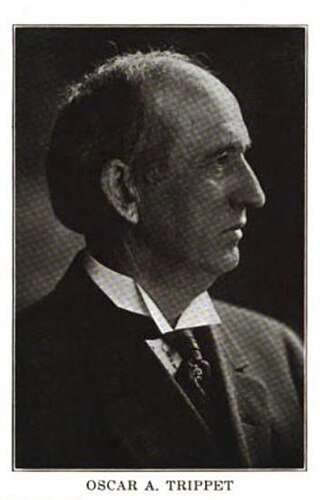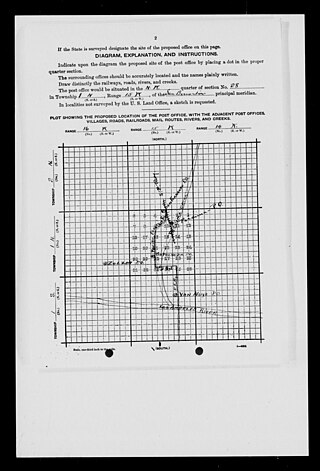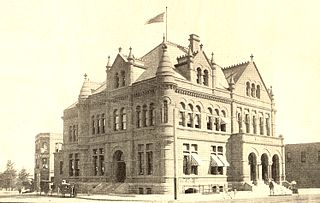
The Fort Worth Stockyards is a historic district that is located in Fort Worth, Texas, north of the central business district. A 98-acre (40 ha) portion encompassing much of the district was listed on the National Register of Historic Places as Fort Worth Stockyards Historic District in 1976. It holds a former livestock market which operated under various owners from 1866.

The Union Stock Yard & Transit Co., or The Yards, was the meatpacking district in Chicago for more than a century, starting in 1865. The district was operated by a group of railroad companies that acquired marshland and turned it into a centralized processing area. By the 1890s, the railroad capital behind the Union Stockyards was Vanderbilt money. The Union Stockyards operated in the New City community area for 106 years, helping Chicago become known as the "hog butcher for the world," the center of the American meatpacking industry for decades. The yards became inspiration for literature, and social reform.

Ballona Creek is an 8.5-mile (13.7 km) channelized stream in southwestern Los Angeles County, California, United States, that was once a "year-round river lined with sycamores and willows" with the Tongva village of Guashna located at the mouth of the creek. Ballona Creek and neighboring Ballona Wetlands remain a prime bird-watching spot for waterfowl, shorebirds, warblers, and birds of prey.

The Los Angeles Chinese massacre of 1871 was a racial massacre targeting Chinese immigrants in Los Angeles, California, United States that occurred on October 24, 1871. Approximately 500 white and Hispanic Americans attacked, harassed, robbed, and murdered the ethnic Chinese residents in what is today referred to as the old Chinatown neighborhood. The massacre took place on Calle de los Negros, also referred to as "Negro Alley". The mob gathered after hearing that a policeman and a rancher had been killed as a result of a conflict between rival tongs, the Nin Yung, and Hong Chow. As news of their death spread across the city, fueling rumors that the Chinese community "were killing whites wholesale", more men gathered around the boundaries of Negro Alley. A few 21st-century sources have described this as the largest mass lynching in American history.

The Packers and Stockyards Act of 1921 regulates meatpacking, livestock dealers, market agencies, live poultry dealers, and swine contractors to prohibit unfair or deceptive practices, giving undue preferences, apportioning supply, manipulating prices, or creating a monopoly. It was enacted following the release in 1919 of the Report of the Federal Trade Commission on the meatpacking industry.

The Union Stockyards of Omaha, Nebraska, were founded in 1883 in South Omaha by the Union Stock Yards Company of Omaha. A fierce rival of Chicago's Union Stock Yards, the Omaha Union Stockyards were third in the United States for production by 1890. In 1947 they were second to Chicago in the world. Omaha overtook Chicago as the nation's largest livestock market and meat packing industry center in 1955, a title which it held onto until 1971. The 116-year-old institution closed in 1999. The Livestock Exchange Building was listed on the National Register of Historic Places in 1999.

The Livestock Exchange Building in Omaha, Nebraska, was built in 1926 at 4920 South 30 Street in South Omaha. It was designed as the centerpiece of the Union Stockyards by architect George Prinz and built by Peter Kiewit and Sons in the Romanesque revival and Northern Italian Renaissance Revival styles. In 1999 it was designated an Omaha Landmark and listed on the National Register of Historic Places. The Union Stockyards were closed in 1999, and the Livestock Exchange Building underwent an extensive renovation over the next several years.

California's 59th State Assembly district is one of 80 California State Assembly districts. It is currently represented by Democrat Reggie Jones-Sawyer of Los Angeles.

Oscar A. Trippet was a United States district judge of the United States District Court for the Southern District of California. The Trippet Ranch gate of Topanga State Park is named for him, as his family owned the land through the first half of the 20th century.
The Western Pacific Railroad (1862-1870) was formed in 1862 to build a railroad from Sacramento, California, to the San Francisco Bay, the westernmost portion of the First transcontinental railroad. After the completion of the railroad from Sacramento to Alameda Terminal on September 6, 1869, and then the Oakland Pier on November 8, 1869, which was the Pacific coast terminus of the transcontinental railroad, the Western Pacific Railroad was absorbed in 1870 into the Central Pacific Railroad.

The California Central Railroad (CCRR) was incorporated on April 21, 1857, to build a railroad from Folsom to Marysville, as an extension of the Sacramento Valley Railroad which terminated at Folsom. The first division of the CCRR was 18.5 miles long; it started at Folsom, crossed the American River, and ended at the new town of Lincoln, twenty-four miles south of Marysville. The bridge over the American River was the first railroad bridge of any importance built in California, and the American the first river in California crossed by trains. In 1858, California Central was probably the first California railroad to employ Chinese laborers and first to demonstrate that "Chinese laborers can be profitably employed in grading railroads in California."

Mission Acres was a historic rural community in the northern San Fernando Valley. Its historic boundaries correspond roughly with the former community of Sepulveda and present day community of North Hills within Los Angeles, California. The community's western border was Bull Creek, which flowed south out of Box Canyon in the western San Gabriel Mountains near San Fernando Pass.
Albert Etter (1872–1950) was an American plant breeder best known for his work on strawberry and apple varieties.

Edward Kern (1860–1912) was a politician and police chief from Los Angeles, California. He also served in the war against Geronimo.

The California Nursery Company was established in Niles, California, and incorporated in 1884 by John Rock, R.D. Fox, and others. The nursery sold fruit trees, nut trees, ornamental shrubs and trees, and roses. It was responsible for introducing new hybrids created by such important West Coast breeders as Luther Burbank and Albert Etter.
Erma Horsley was an American film editor and screenwriter who worked for Republic Pictures during the 1920s and 1930s.

The first Los Angeles federal building, more formally the Los Angeles Federal Courthouse and Post Office or U.S. Post Office and Custom House was a Richardsonian Romanesque red brick, brownstone and terra cotta structure designed by Will A. Freret. The building, located at the corner of Main Street and Winston Street, between Fourth and Fifth Streets, was used for about nine years, from 1892 to 1901, to house the Southern District of California, a U.S. post office, and the customs office. The building was partially demolished in 1901; Court moved to the Tajo Building in the meantime. The post office was housed at a series of locations until the second Los Angeles federal building opened in 1910.

The Tajo Building was a six-story office building on the northwest corner of First and Broadway in downtown Los Angeles, developed by Simona Martinez Bradbury. The building, named for the Bradbury family's Tajo silver mine in Mexico, was variously home to USC Law School, the Los Angeles Stock Exchange and, for the first decade of the 1900s, the United States District Court for the Southern District of California.














